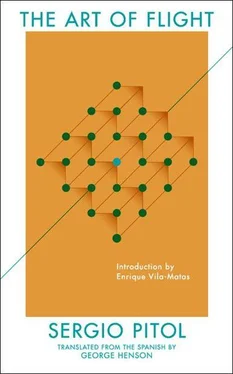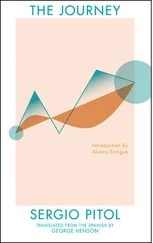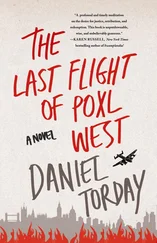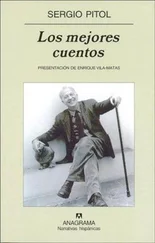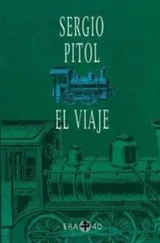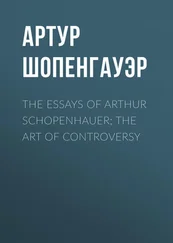I owe to our great polygraph, and to several years of tenacious reading, my passion for language; I admire his secret and serene originality, his infinite combinatory ability, his humor, his talent for inserting everyday expressions, seemingly at odds with literary language, into a masterful exposition on Góngora, Virgil, or Mallarmé. Even though I may have been deaf to the theoretical reason present in Reyes, I am indebted to him for introducing me to the various fields to which I might otherwise have been slow to arrive: the Hellenistic world, medieval Spanish literature, the Golden Age, Brazil’s sertão novels and avant-garde poetry, Sterne, Borges, Francisco Delicado, the detective novel, and so much more! His tastes were ecumenical. Reyes carried himself with a slight air of confidence and extreme courtesy, moving with an insatiable curiosity through many different literary spheres, some unenlightened. He complemented the hedonistic practice of writing with other responsibilities. The teacher — because he was that too — conceived of sharing with his flock everything that delighted him as a kind of ministry. He was a patient and hopeful shepherd who endeavored to, and in some cases succeeded in, cultivating generations of Mexicans; my generation’s debt to him is immeasurable. During a time of closed windows and doors, Reyes urged us to embark on every journey. As I recall him, I am reminded of one of his first stories, “The Dinner,” a horror story situated in an everyday setting, in which, at first sight, everything seems normal, anodyne, one might even say a bit saccharine. Between the lines, however, little by little, the reader begins to sense that he is entering an insane, perhaps criminal, world. That “dinner” must have hit the right spot. Years later, I started writing. Only now do I realize that one of the roots of my narrative lies buried in that story. A large part of what I have done since is little more than a mere set of variations on that story.
My apprenticeship has been the result of an immoderate reading of stories and novels, of my efforts as a translator and the study of some books on facets of the novel written almost always by storytellers, such as E. M. Forster’s classic Aspects of the Novel, or the exhaustively prepared Notebooks of Henry James , or the fragmentary Notebook of Anton Chekhov , as well as a long list of interviews, articles, and essays on the novel by novelists, not to mention, of course, conversations with people from the profession.
These decalogues, enumerations of instructions for use by aspiring young writers, have proven fascinating to me for the mere fact that they allow me to read the authors’ work again in an unforeseeable light. The precepts that Chekhov wrote to guide his younger brother who was determined to take up the literary profession are a clear explanation of the poetics that the Russian author had forged. They are not the cause but rather the result of a work in which the author outlined and defined his world and his literary specificity. But will we understand Chekhov’s world better because we know those precepts taken from his own professional experience? I think not. In return, the knowledge of the craftsmanship he employed to write his remarkable stories surely intensifies the pleasure of reading them. Knowing those precepts allows us to discover, if not his conceptual world, then surely some secrets of his style, or, rather, the mysteries of his carpentry. Only if we apply as a rule the same precepts to Dostoyevsky, Céline, or Lezama Lima must we disqualify them as storytellers, because both their universe and their methods and purposes are in total opposition to the Russian writer. Indeed, could Horacio Quiroga’s decalogue be applied to the work of Joyce, Borges, or Gadda? I am afraid not. For no reason other than they belong to different literary families. In the end, each author has to create his own poetics, lest he be content to be the succubus or the acolyte of a teacher. Each will establish, or perhaps it would be better to say that he will find, the form that his writing demands, since no narrative is possible without the existence of form. And in this way, the hypothetical creator must be guided by his own instincts.
One learns and unlearns at every turn. The novelist must understand that the only reality he is responsible for is his novel, and therein lies his fundamental responsibility. Everything he has lived, his personal conflicts, social preoccupations, his good and bad loves, his readings and, of course, dreams, must come together in it, because the novel is a sponge that will wish to absorb everything. The author will take care to feed and strengthen it, preventing any tendency toward obesity. “A novel is in its broadest definition,” Henry James maintained, “a personal, a direct impression of life.”
Having quoted this great storyteller, I should admit that I owe some of the crucial lessons about the craft to reading him. I was fortunate enough to translate into Spanish seven of his novels, including one of the most fiendishly difficult to be found in any literature: What Maisie Knew . Translating allows one to enter fully into a work, to know its bones, its structure, its silences. James validated for me a trend that was present in my very first stories: a furtive and sinuous approach to a fringe of mystery that is never entirely clear and that allows the reader to choose the solution he believes most fitting. To achieve this, James adopted a highly effective solution: the removal of the author as an omniscient subject who knows and determines the behavior of his characters and in his place one or, in his most complex novels, multiple “points of view,” through which the character tries to arrive at a meaning of some incident he has witnessed. Through this device, the character constructs himself, in an attempt to decipher the universe around him: the real world undergoes a process of deformation upon being filtered through consciousness. We will never know to what extent that narrator (that “point of view”) dared to confess in the story, nor what portions he decided to omit, nor the reasons that led to one decision or another.
Similarly, even before reading James, my stories were characterized by their representation of an oblique view of reality. In general, there is a hole in them, an ominous void that is almost never covered. At least not entirely. The structure must be very solid so that the vagueness that interests me does not become chaos. The story must be told and retold from different angles and in it each chapter functions to add new elements to the plot and, at the same time, blur and contradict the schema that the previous elements have established. A kind of Penelope’s weave that is continuously done and undone, in which a plot contains the germ of another plot that will in time lead to another, until the moment when the author decides to end his story. It is a literary convention that can be arduous, but is in no way novel. The origin of this literary tradition dates back to One Thousand and One Nights . In the Far East, this device has been employed frequently and has produced works that we must inevitably call masterpieces: Cao Xuequin’s Dream of the Red Chamber , written in China in the eighteenth century, and the short story “Rashomon,” by Ryūnosuke Akutagawa, written in early twentieth-century Japan. Its Occidental counterpart is easier to trace. We find it, of course, in the Quixote , in The Canterbury Tales ; it reemerges in the Enlightenment, with amazing energy, in Jacques the Fatalist and His Master , by Diderot; in Jan Potocki’s The Manuscript Found in Saragossa ; and in that wonder of wonders, Tristram Shandy , by Laurence Sterne. In our century, this type of novel, whose composition has always been associated with Chinese boxes or Russian matryoshka dolls, and which today theorists call mise en abyme (placed into abyss), has found a legion of fans. Allow me to cite three remarkable titles: Ford Madox Ford’s The Good Soldier , Nabokov’s The Real Life of Sebastian Knight , and The Garden of Forking Paths by Jorge Luis Borges.
Читать дальше
